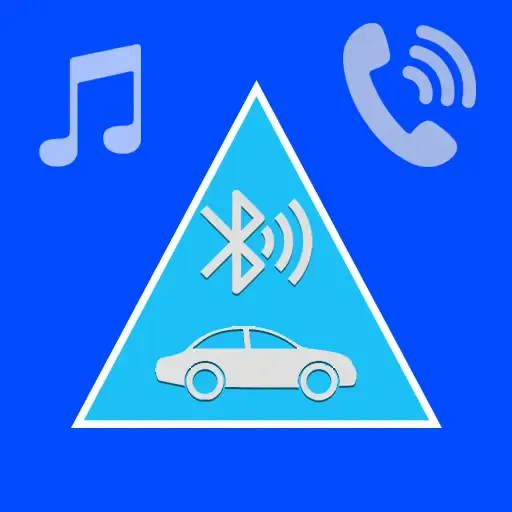 |
|
| Rating: 0 | Downloads: 10,000+ |
| Category: Libraries & Demo | Offer by: Apps Dot Apps |
Apple CarPlay and Android Auto are integrated systems that bring your smartphone’s functionality into your vehicle’s infotainment screen. These apps allow you to access your phone’s apps, make calls, send messages, listen to music, and navigate using the display and controls already installed in your car. They are primarily designed for drivers who own a compatible smartphone and want a safer, more convenient way to interact with their devices while driving.
The key value lies in enhanced safety, convenience, and entertainment during journeys. Using Apple CarPlay – Android Auto keeps your eyes on the road and hands free, reducing distractions. It offers a familiar interface for accessing essential smartphone features like maps, music, and communication tools within the car, making travel more pleasant and manageable.
App Features
- Seamless Smartphone Connectivity: This feature connects your compatible iPhone or Android phone wirelessly or via USB to your car’s infotainment system, projecting its screen onto the car display. It benefits the user by eliminating the need to physically handle the phone while driving. For instance, you can now use navigation apps like Google Maps or Apple Maps without fumbling with your phone.
- App Mirroring: It enables users to mirror selected apps from their smartphone onto the car’s larger screen. This includes not only navigation apps but also music streaming services, podcasts, audiobooks, and potentially compatible gaming apps. The improved interface and potentially larger screen enhance usability, speed (when using dedicated navigation or music apps), and performance compared to using small phone screens on the move, allowing for easier interaction.
- Audio Control & Media Integration: Users can control their phone’s audio through the car’s sound system, utilizing steering wheel controls or the infotainment touchscreen. This means listening to music, podcasts, or phone calls through high-quality car speakers, and easily adjusting volume or pausing playback without looking at the phone. This feature solves the problem of audio quality limitations on standard earbuds and reduces visual distractions associated with checking phone notifications.
- Hands-Free Calls & Messaging: The system integrates phone calls, contacts, and messaging apps (like iMessage or SMS for CarPlay; Messages or Hangouts for Android Auto) via in-car controls or voice commands (often requiring specific integration like CarPlay with Siri or Google Assistant). This is typically used for making calls, reading/responding to messages, or checking voicemail while driving. Its value is significant for safety and compliance, minimizing the time spent interacting directly with the smartphone during driving situations.
- Navigation Assistance: By integrating with apps like Apple Maps, Waze, or Google Maps, it provides turn-by-turn navigation using the car’s display and voice prompts. Flexibility is key here, allowing users to choose their preferred navigation app based on personal preference or regional availability. This matters particularly for drivers needing detailed turn instructions and real-time traffic updates integrated seamlessly during their trip.
- CarControl API & Third-Party Integration (Optional): Some advanced apps allow developers to create features that interact directly with the vehicle’s controls using the CarPlay/Android Auto API. This could include controlling climate settings via voice command through CarPlay or adjusting seat positions via Android Auto, depending on automaker and app support. This advanced feature supports overall system functionality by extending the integration beyond basic phone interaction into vehicle functions, offering a more personalized driving experience if the car supports such features.
Pros & Cons
Pros:
- Enhanced Driver Safety
- Convenience & Hands-Free Operation
- Familiar Interface with Smartphone Apps
- Better Audio Experience
Cons:
- Limited Compatibility with Older Vehicles/Ports
- Dependence on Specific Smartphone Brands/System
- Setup Complexity Sometimes
- Occasional Glitches or Lag
Similar Apps
| App Name | Highlights |
|---|---|
| Garmin Drive App (for MirrorLink) |
This app offers fast processing, intuitive design, and wide compatibility. Known for custom workflows and multi-language support. |
| Waze Drive (by Waze Connected Cars) | |
| TomTom Navigation App (for MirrorLink) |
Designed for simplicity and mobile-first usability. Includes guided steps and real-time previews. |
| Google Maps (Android Auto Integration) |
Offers AI-powered automation, advanced export options, and collaboration tools ideal for teams. |
Frequently Asked Questions
Q: What is the difference between Apple CarPlay and Android Auto?
A: Both Apple CarPlay and Android Auto are systems designed to integrate smartphone features with a car’s infotainment system. The key difference lies in the operating systems they support – Apple CarPlay is exclusive to iPhones running iOS, while Android Auto is designed for most Android smartphones.
Q: How do I set up Apple CarPlay/Android Auto in my car?
A: Setup generally begins by ensuring your car has a USB port and compatible infotainment system (often needing an adapter for older cars). Connect your compatible iPhone or Android phone via USB. Follow the prompts on both your phone and the car’s display to pair and set up the system.
Q: Can I use Apple CarPlay with my Android phone?
A: No, Apple CarPlay is exclusively designed for iPhones. However, you can use the alternative system, Android Auto, on your Android phone, provided both your phone and car support it.
Q: Are there any costs associated with using Apple CarPlay or Android Auto?
A: Typically, both Apple CarPlay and Android Auto use the standard cellular data plan for your phone. There are no separate subscription fees for using the features themselves, though you may need to subscribe to individual apps (like navigation or music services) that integrate with them.
Q: Can I use multiple apps simultaneously with Apple CarPlay – Android Auto?
A: While the system integrates core functions like navigation and music, using two large, data-intensive apps (e.g., Maps and Music) simultaneously is often not recommended. This is because doing so can overload the car’s processing capabilities and potentially degrade performance or increase data usage significantly.






